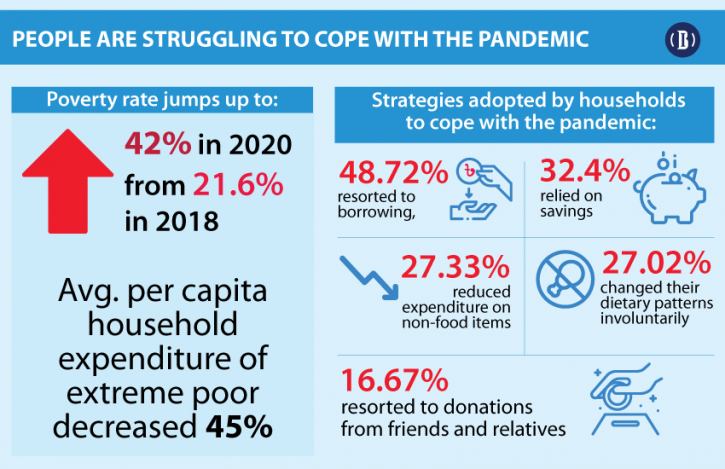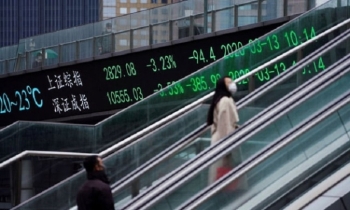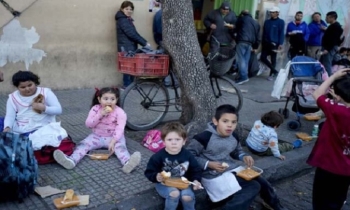Covid-19 doubles poverty rate in Bangladesh: SANEM
BI Report || BusinessInsider

People are struggling to cope with the pandemic
Upper poverty rate in Bangladesh has increased to 42 percent in 2020 from 21.6 percent in 2018 due to the Covid-19 pandemic, says a survey.
The lower poverty rate has risen to 28.5 percent in 2020 from 9.4 percent in just two years ago, according to the survey titled “COVID-19 Fallout on Poverty and Livelihoods in Bangladesh” conducted by South Asian Network on Economic Modeling (SANEM), a local think-tank.
“The poverty rate has increased in both urban and rural areas,” said SANEM Executive Director Selim Raihan while revealing the findings at a webinar on Saturday.
The upper poverty rate stood at 45.3 percent in the rural area and 35.4 percent in the urban area while the lower poverty rate was 33.2 percent in the rural area and 19 percent in the urban area, said the findings.
The average per capita household expenditure of extreme poor decreased by 45 percent, moderate poor by 29 percent, and vulnerable poor by 17 percent in 2020 compared to 2018. Non-poor and non-vulnerable households also witnessed a fall of 6 percent in their per capita household expenditure.
In reaction to the crisis, households adopted a variety of strategies to cope with the pandemic. For example, 48.72 percent resorted to borrowing, 32.4 percent relied on savings, 27.33 percent reduced expenditure on non-food items, and 27.02 percent changed their dietary patterns involuntarily while 16.67 percent resorted to donations from friends and relatives.
“The COVID-19 pandemic pushed the inequality up,” said Raihan citing the findings.
Speaking at the event, economist MM Akash asked a fundamental question of whether the jump in poverty rates and backward mobility induced by the COVID-19 shock is temporary or long-lasting.
To understand whether the crisis will persist, it is important to figure out the key areas which have been most negatively impacted and whether it is possible to replenish the economic losses through short-term initiatives, he said.
There is a possibility of a K-shaped recovery in Bangladesh in which different income groups of the population recover at different rates and magnitudes, said Akash.
Therefore, he recommended that future studies should consider assessing the impact of the pandemic on the ultra-rich population in order to uncover the complete picture of recovery.
CPD Executive Director Fahmida Khatun said that the survey reaffirms the reality that the pandemic has caused depletion in income and savings and loss in employment opportunities for a significant proportion of the population.
“Therefore, it can be expected that much of the milestones in socioeconomic development and poverty alleviation that have been accomplished over the past years are at risk of reversal due to the COVID-19 crisis,” she noted.
Fahmida further acknowledged that, even before the pandemic, there was an indication that the economic growth in Bangladesh has not been inclusive.
Since the survival mechanisms available to poor households are extremely limited, the crisis will undoubtedly exacerbate inequality in society.
The SANEM executive director highlighted the five key suggestions: management of the COVID-19 crisis, increasing social safety net coverage including direct cash transfer to the poor, price stability of essential products, reduction of corruption, and creating employment opportunities.
























